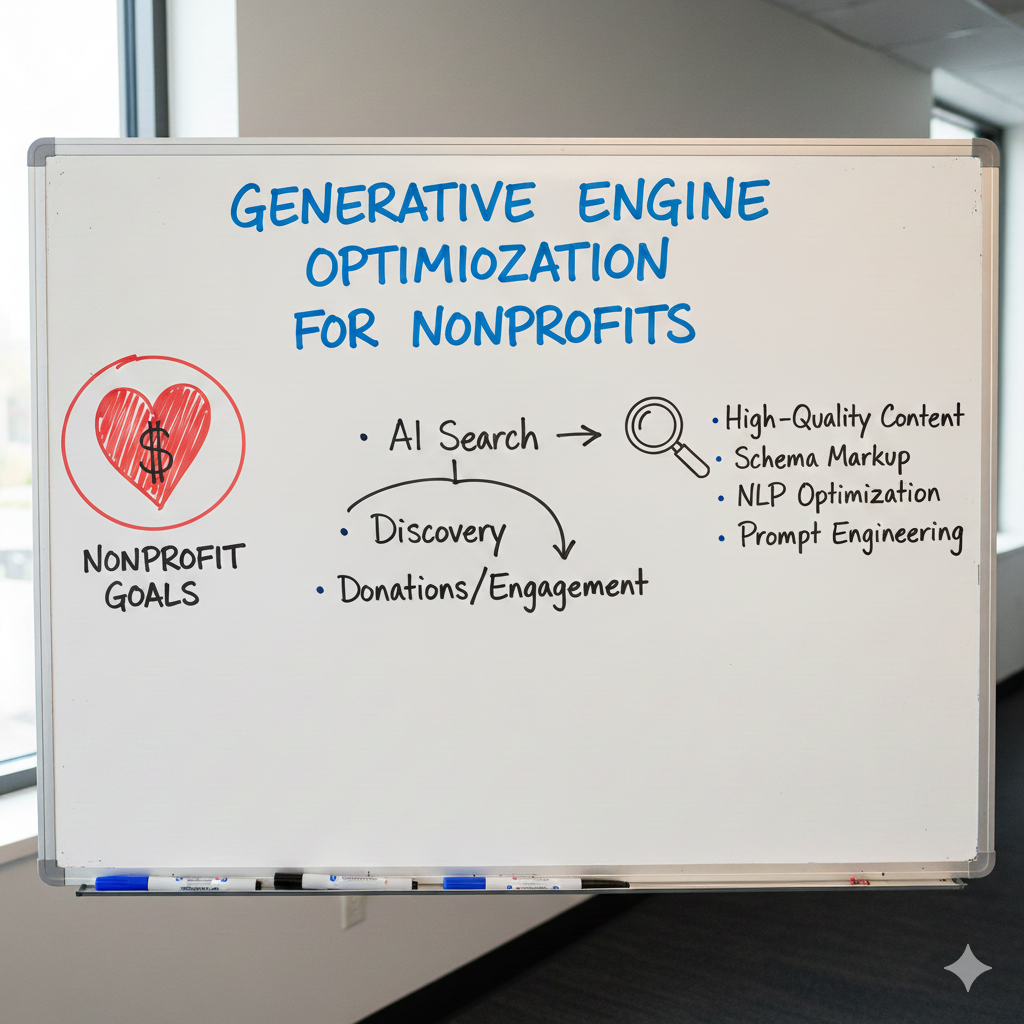Generative Engine Optimization for Nonprofits: Why It Matters Now
Courtesy of Nano Banana.
For years, nonprofits have invested in search engine optimization (SEO) to ensure that when someone types a question into Google, their mission, programs, and resources are discoverable. But search is changing. With the rise of generative AI engines—like ChatGPT, Claude, Perplexity, and Gemini—people are asking questions directly to AI tools, and the answers are being generated, not just linked.
This shift introduces a new frontier: Generative Engine Optimization (GEO).
What is Generative Engine Optimization?
GEO is the practice of making your nonprofit’s content discoverable, credible, and retrievable by AI-driven search engines. Instead of optimizing for algorithms that rank links, you’re optimizing for large language models (LLMs) that summarize, synthesize, and recommend.
When someone asks, “What organizations support young adult cancer survivors?” you want your nonprofit’s name, story, and resources to appear in the AI-generated answer—not buried in a footnote.
Why Nonprofits Should Care
Visibility drives trust and donations
If generative engines don’t recognize your organization, potential donors, volunteers, or beneficiaries may never know you exist.Mission-critical accuracy
Many nonprofits work in health, education, or advocacy—fields where misinformation spreads fast. If AI engines generate incomplete or outdated responses, communities lose out.Leveling the playing field
GEO allows smaller nonprofits to compete with large institutions. AI models don’t just rely on backlinks and budgets—they lean on high-quality, structured, and consistent content.
How to Get Started with GEO
Here are practical steps nonprofits can take to prepare for the generative future of search:
1. Own Your Story with a Blog or Knowledge Hub
AI models rely heavily on first-party sources. Your nonprofit’s blog, resource library, or knowledge hub becomes the raw material for answers. Publish explainers, FAQs, and thought leadership tied directly to your mission.
2. Structure Content for Machines and Humans
Use clear headings, question-based titles, and concise answers. Example: instead of “Our Services,” use “What services does [Nonprofit Name] provide?”. This mirrors the way users ask generative engines for help.
3. Keep Information Fresh
AI tools pull from the most up-to-date information they can access. Outdated pages (old board lists, expired programs) hurt credibility. Regular updates signal trustworthiness to both humans and machines.
4. Build Digital Authority
Mentions on credible partner sites, press coverage, and cross-linking strengthen your nonprofit’s authority. When AI engines triangulate information, they prioritize content that shows up consistently across multiple reputable sources.
5. Experiment with Direct AI Queries
Search for your nonprofit in ChatGPT, Perplexity, or Gemini. See what comes up. Are you mentioned? Is the information correct? If not, you know where to start shaping your content footprint.
GEO as a Mission Strategy
Generative Engine Optimization isn’t just a marketing tactic—it’s a mission-critical strategy. The communities you serve increasingly turn to AI for guidance, resources, and recommendations. Ensuring your nonprofit shows up in those conversations means more people can access your help, join your cause, and trust your expertise.
The shift from SEO to GEO isn’t about abandoning what works—it’s about extending your reach into where the future of search is already happening. Nonprofits that embrace GEO today will be the ones most visible, trusted, and impactful tomorrow.

